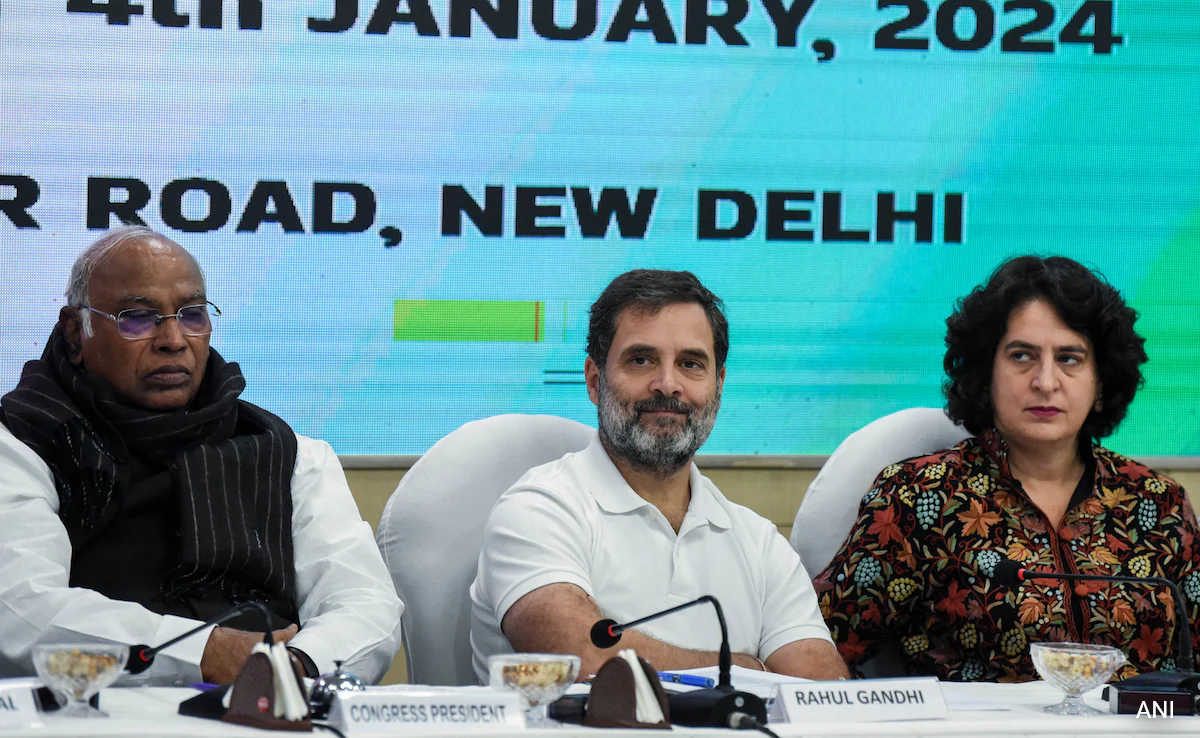
The Congress, like Mark Twain, can say "the rumours of my death have been greatly exaggerated". The party's 99 seats in the 2024 Lok Sabha election restored democratic balance in India, giving the main opposition party a new lease of life.
So far, it was felt that even if the Congress won important state elections, it was not able to make a dent in national politics. Prime Minister Narendra Modi's cult popularity seemed too strong to shake off. The Lok Sabha results have broken that myth. And the Congress has earned seats not only from the South but also from the North, penetrating the Bharatiya Janata Party's (BJP) fortresses.
The big question is, how can the Congress now carry forth this momentum? In the last 10 years, moments where the party seemed to have a good day did not convert into lasting momentum. The small victories don't seem to add up.
If the Congress is to return to power in 2029, aiming to cross at least 200 seats and form a coalition, momentum is key. A year from now, the 99 seats should not look like a flash in the pan.
There is data to show that the Congress has done well along the route of the two Bharat Jodo Yatras. Generally speaking, no one can deny that the two Yatras helped the Congress party gain in both vote shares and seats by consolidating the party's hitherto demoralised support base.
Consistency Is Key
Two lessons from the Bharat Jodo Yatras should help guide the party for the next five years: national campaigning and consistency.
Instead of one or two day-long protests, it is clear that the party needs long-running campaigns that last for weeks and months. That is what it takes to drive home the message to 140 crore diverse people in this huge country - especially if the media is not giving you fair coverage.
This cannot wait till 2028. The Congress party should always have a national campaign running, regardless of how it is doing or not doing in state elections. The national campaign should be seen to be complementing the state campaigns, as opposed to suspending national campaigns when state elections are ongoing.
One big national campaign every year shall go a long way in preventing anyone from saying 'what is the Congress doing?' and keeping alive a sense of opposition through mass connect. This campaign should ideally be led by Rahul Gandhi, even if it is not as impossibly taxing as the first Bharat Jodo Yatra. Gandhi's involvement made sure the party rank and file gave its best to the Yatra, keeping factional differences aside.
State Battles
And then there are state elections.
An obvious way to ensure momentum is to focus on winning as many state elections as possible. Immediate attention will be on Maharashtra, Haryana, Delhi and Jharkhand. The Congress has done so well in the first two that it would seem like the party has a high chance of ending up in the treasury benches in both states.
However, a chastised BJP will do its best to prevent losing Maharashtra and Haryana. So, the Congress has to be careful about presuming that the two states are already in - overconfidence leads to mistakes.
In Haryana, the party will need to make sure it presents a united house and does not allow the impression that the Congress is only a Jat front. Addressing factionalism in the party is key. The Congress campaign in Haryana has to pre-empt an anti-Jat consolidation.
Uddhav for CM
In Maharashtra, the Congress has surprised everyone by emerging as the single-largest party. This runs the risk of the local unit in Maharashtra trying to dictate terms to Uddhav Thackeray and Sharad Pawar, both of whose units have done reasonably well in the face of insurmountable challenges. The Maharashtra Vikas Aghadi alliance in Maharashtra would do well by clearly announcing a common minimum programme with Uddhav Thackeray as its chief ministerial candidate. The Congress unit in Maharashtra should aim to again be the single-largest party in the state assembly elections.
In Delhi, the party must force the AAP to clarify whether it wants an alliance or not. If the AAP keeps the Congress hanging, the Congress will be able to go neither full anti-incumbency mode nor alliance mode. If CM Arvind Kejriwal does not get bail, the February 2025 Delhi elections will be unpredictable. The situation allows space for the Delhi State Congress to reinvent itself.
The Lesson From Rajasthan
Ashok Gehlot's revolutionary welfare schemes in Rajasthan meant the BJP could win only 120-odd seats in the Rajasthan assembly elections in 2023, as opposed to the 150 seats the party expected. The state anyway sees governments alternate every 5 years, but a landslide Madhya Pradesh-like victory for the BJP in Rajasthan would not have allowed for a situation where the Congress could win a surprise 12 seats in the state in Lok Sabha.
The lesson from Rajasthan is to not limit one's vision to the immediate election but strategise with a view of the next two to three election cycles. That is what the Congress needs to do to maintain momentum - both at the national level and in state elections.
(The author is Co-founder, DesignBoxed)
Disclaimer: These are the personal opinions of the author


